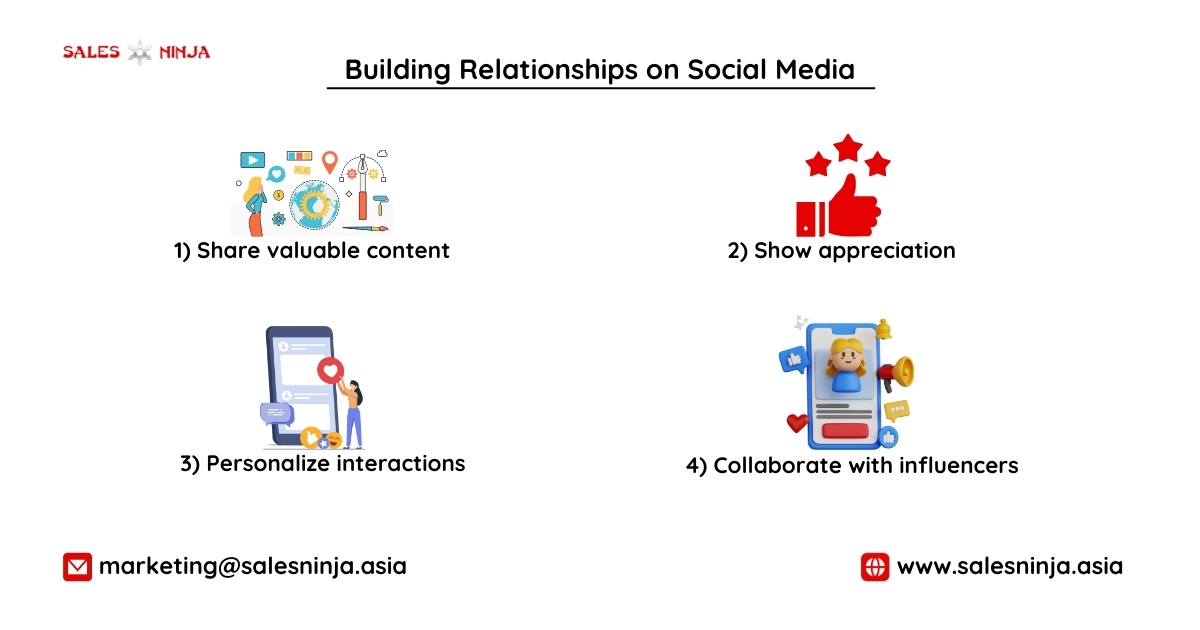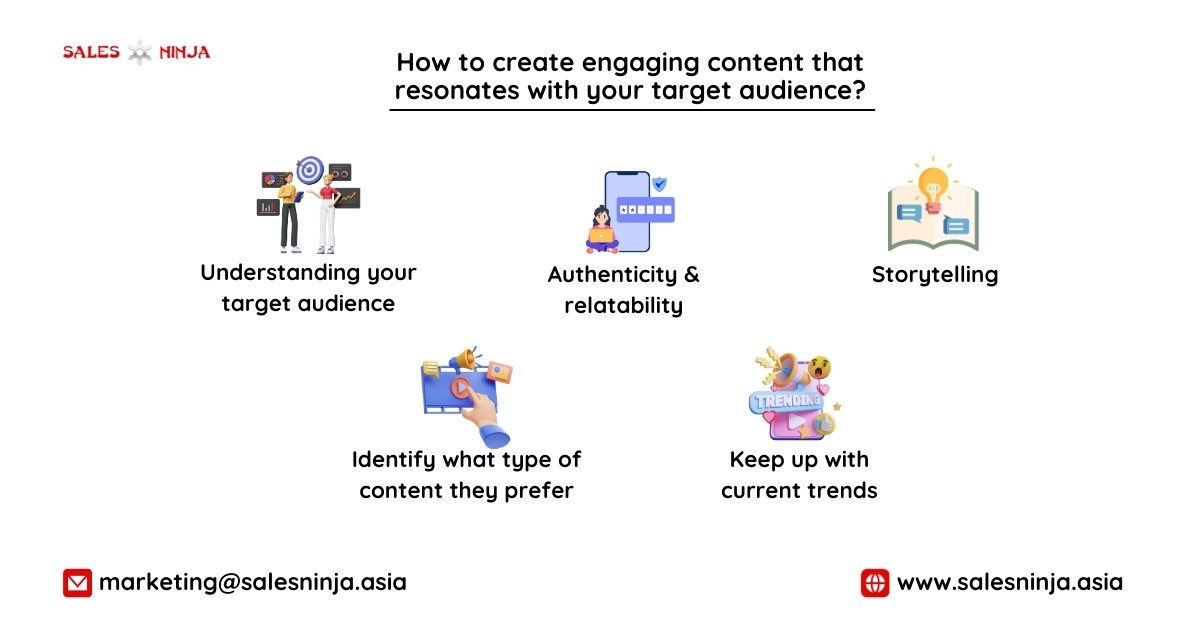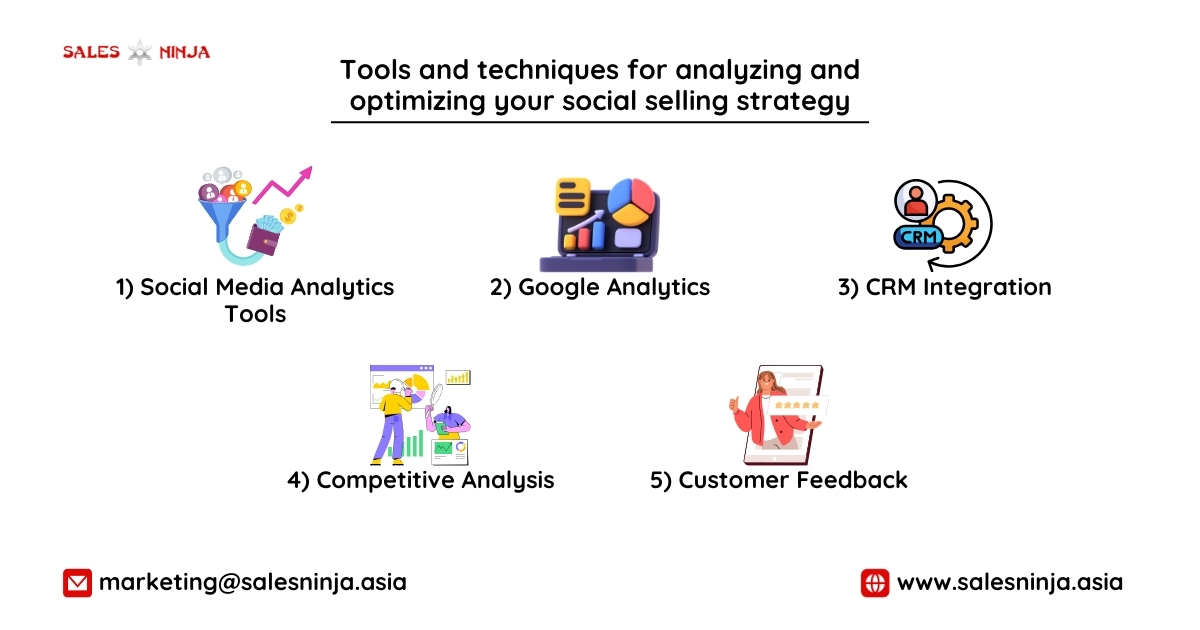Most people use at least one social networking platform on a regular basis, offering a unique opportunity to tap into a pool of potential clients. As a result, social media has become a powerful platform for communicating with prospective customers and influencing their decisions. This is why understanding and applying the principles of social selling for the modern age can be highly beneficial for your business.
However, the concept of social selling may still need to be clarified to some. So, here we will explore and explain what it entails. Along with providing useful guidance on navigating the social platforms to reach and interact with your desired audience effectively. Furthermore, we will provide you with valuable advice and techniques to not only establish connections with potential customers but also assess the success of your social selling efforts.
The Evolution of Sales: Why Social Selling Matters for the Modern Age
The evolution of sales has been shaped by advances in technology over time until it reached its current form of social selling for the modern age. Social selling, in simple terms, can be defined as using social media platforms to identify, connect with, and engage potential customers. Or, you can define it as a way of establishing your brand as a trusted resource. And building a community around your offerings using social media platforms such as LinkedIn, Twitter, and Facebook.
While traditional sales practices like cold calling, door-to-door sales, and other forms of direct outreach to potential customers may have worked in the past. They are becoming less effective in today’s world.
This transition from traditional “push” tactics to social selling’s “pull” strategy can be attributed to several key factors:
- People are spending more time on social media platforms than ever before. This presents an opportunity for businesses to reach out to their target audience through these channels and establish meaningful connections
- Social selling provides a more personalized approach where prospects feel like they are engaging with real individuals rather than faceless companies.
- Instead of pitching products or services directly, social sellers focus on building relationships and providing value by sharing relevant content and insights. This helps create trust among potential customers.
However, 84% of B2B buyers begin their buying process online using referrals or recommendations from trusted sources within their networks (Salesforce). Social selling enables businesses to tap into this trend by leveraging existing connections or building new ones through networking on various channels.
Moreover, statistics show that adopting a social selling strategy can lead to better results compared to traditional methods alone. For instance, sales reps who leverage social selling techniques experience 45% higher win rates (LinkedIn). In addition, companies that excel at nurturing leads generate 50% more leads at a lower cost (Forrester Research)
These figures highlight the effectiveness of incorporating social selling for the modern age. Into the overall sales process for businesses looking for sustainable growth opportunities.
Building Relationships on Social Media: A Key Pillar of Social Selling for the Modern Age
However, now the question that often arises is how can a business build relationships with their customers or potential customers on social media? Actually social media is all about being interactive. Responding to comments and messages from your followers shows that you are interested in what they have to say. Ask questions, run polls or host live Q&A sessions. These are great ways to engage your audience and get them talking. The main thing is how interestingly you can engage with your audience.

So now let’s discuss some strategies for initiating conversations and building relationships on social media:
- Share valuable content: Your posts should be more than just promotional material. They should add value by providing useful information or entertaining your followers. Try to keep a balanced mix of insights relevant to your industry, behind-the-scenes glimpses at your company, and curated content from other sources. This will keep them coming back for more and help establish your brand as an authority in your industry.
- Show appreciation: Make sure you acknowledge mentions or tags from other users who share positive reviews or experiences about your product/service. You can even give shoutouts or feature user-generated content (UGC). This makes people feel valued and strengthens the relationship between you and your customers.
- Personalize interactions: People love personalized attention! Use tools like Facebook Messenger bots or email marketing software to send personalized messages and offers based on their preferences or past interactions with your brand. Show genuine interest in building a mutually beneficial relationship. This approach is far more likely to yield positive connections than simply spamming “connect” requests.
- Collaborate with influencers: Partnering with social media influencers who have a large following can help you reach out to a wider audience. Their recommendations carry weight, which can boost your credibility and attract more customers.
So, basically, social selling for the modern age emphasizes consistent interaction, responsiveness, and engaging content. When a company embodies these principles, it shows that they value their customers. This creates trust and credibility among the audience which leads to long-term relationships.
How to create engaging content that resonates with your target audience?
Creating engaging content that resonates with your target audience is essential for any successful marketing strategy. It not only helps to attract and retain their attention, but it also builds a strong connection between your brand and its consumers. However, creating such content can be quite challenging as every individual has different preferences and interests.

-
Understanding your target audience
To begin with, the first step is understanding your target audience. Conduct thorough research on their demographics, behaviors, interests, and pain points. Nike as an example; aligning with their target audience, their content revolves around inspiring stories of athletes and workout routines that resonate with their followers. Thus the more you know about them, the better equipped you will be to create relevant content that speaks directly to them.
-
Identify what type of content type prefer
Once you have a clear idea of who your target audience is, the next step is to identify what type of content they prefer consuming. Some people may enjoy reading blogs or articles while others might prefer visual aids such as videos or infographics. Knowing this information will help you tailor your message accordingly and deliver it through the most effective medium.
-
Storytelling
Another crucial aspect of creating engaging content is storytelling. Humans are naturally drawn towards stories; therefore incorporating an element of storytelling into your content can significantly increase its appeal among readers/viewers/listeners alike. Your story should not only entertain but also connect emotionally with your audience by addressing their needs or desires. People love connecting emotionally with brands they follow; hence sharing real-life experiences or customer testimonials helps build a genuine connection between the brand and its followers. A great example of this is Coca-Cola’s “Share a Coke” campaign where they personalized bottles with popular names – making customers feel like part of the brand story.
-
Keep up with current trends
Furthermore, make sure to keep up with current trends in pop culture as well as industry-specific news and updates when developing new ideas for content creation That way, you stay updated while keeping things fresh for followers/fans/customers so they don’t lose interest in what’s being presented before them!
-
Authenticity & relatability
In addition to these key elements mentioned above, there are some other important factors that contribute greatly towards making engaging content resonate deeply within one’s desired demographic: authenticity & relatability. People tend to engage more with authentic brands/people/content creators. Then those who come across as forced or fake which means staying true to yourself/brand values/goals/messages etc., at all times!
Last but not least – encourage audience participation by asking for feedback, opinions or suggestions. This not only shows that you value their input but also helps to create a sense of community and involvement with your brand.
Identifying and Qualifying Leads on Social Media: A Key Skill in Social Selling for the Modern Age
With the vast amount of information available on social media platforms, how will you sift through and identify potential leads?
Keep an ear out for relevant keywords or phrases related to your product or service. To identify potential leads who are already talking about your industry or brand. This provides valuable information for understanding your target market’s pain points and interests.
Strategies for qualifying leads on social media
Once these potential leads have been identified through social listening, the next step is to qualify them based on certain criteria. Create your buyer personas. These personas help in identifying what kind of content would resonate with each segment. And how best to engage with them.
Another strategy for qualifying leads on social media is by utilizing lead scoring techniques which assign numerical values based on factors. Such as engagement level (likes/comments/shares), demographics (age/income/location), and behaviour patterns (frequency of visits/interactions). The higher the score a lead receives; the more likely they are ready for conversion.
Tools and techniques for tracking and analyzing social media leads
To enhance this process further, there are several tools specifically designed for tracking and analyzing social media leads that you can use. Some popular ones include HubSpot’s Social Inbox feature which allows users to monitor mentions from various sources like Twitter, Facebook, and LinkedIn all in one place. Additionally, Klout offers a platform where brands can connect with influential individuals who could potentially provide quality referrals while providing analytics around engagement levels per post.
Nurturing Leads and Closing Deals
Simply having a presence on social media is not enough. It requires strategic planning and relevant execution to effectively use this platform for lead nurturing and deal closing. One key element in utilizing social media for lead nurturing is understanding how it fits into the overall sales funnel.
Social media can be used at various stages of the funnel. From creating awareness to engaging with leads and ultimately converting them into customers. At each stage, different strategies need to be employed based on the specific goals.
To start with, social media can play a significant role in building brand awareness by reaching out to a wider audience through targeted ads or organic reach through content marketing efforts. Once you have captured their attention, it’s essential to engage with your followers consistently by providing valuable content that addresses their pain points and interests. This will help establish trust and credibility among potential customers.
Social media platforms also offer excellent opportunities for personalized interaction with leads through direct messaging or commenting on posts they interacted with previously. By responding promptly and offering helpful solutions, you can nurture these leads further down the funnel towards conversion.

Another crucial factor in successfully using social media for lead nurturing is tracking metrics. Such as engagement rates and click-throughs carefully. These metrics provide insights into what type of content resonates best with your target audience. So that you can adjust your strategy accordingly.
Tips for closing deals and converting social media leads into customers
Moving on to closing deals – once you have nurtured a lead successfully. It’s time to convert them into paying customers using effective strategies tailored specifically for each individual prospect.
- Firstly, make sure all communication channels are open. Offering multiple options like email or phone allows prospects more flexibility when interacting with your business.
- Secondly, utilize customer testimonials across your social media platforms as well as within direct interactions during negotiations. Highlighting satisfied clients’ experiences can build trust and credibility.
- Lastly, it’s essential to make the buying process as smooth and straightforward as possible. This includes having a user-friendly website and streamlined checkout process that is optimized for different devices. By making it easy for customers to complete their purchases.
Measuring Success: Tracking Your Social Selling Efforts
Each business may have different goals and objectives, so their measurement methods will also vary. When measuring the impact of social selling for the modern age, here are some general steps to guide you.
![]()
-
Set clear goals and objectives for your social selling strategy
These goals should align with your overall sales targets and marketing plan. For example, if increasing brand awareness through social media channels is a primary goal. Then you should track metrics such as reach and engagement rates on each platform.
-
Identify key performance indicators (KPIs) that are relevant to your specific goals
Some critical KPIs for social selling include engagement rates – how many people interacted with a post or shared content. Lead generation – how many leads were generated from interactions on social media. And conversion rates- how many leads eventually converted into paying customers.
-
Tools and techniques for analyzing and optimizing your social selling strategy
Tracking and measuring the success of your social selling efforts is crucial in determining whether your strategy is effective or not. Without proper tracking, it would be difficult to know what works and what doesn’t. By making it challenging to make any necessary improvements.

Let’s discuss some tools and techniques that can help you effectively analyze and optimize your social selling strategy:
-
Social Media Analytics Tools
Most popular social media platforms have built-in analytics tools that allow you to track metrics. Such as reach, engagement, clicks, conversions, etc. These insights are valuable in understanding which posts or campaigns are resonating with your audience and driving the most traffic or leads.
-
Google Analytics
In addition to platform-specific analytics tools, using Google Analytics can provide deeper insights into how visitors from different sources (including social media) interact with your website. By setting up goals and tracking specific URLs shared on social media channels, you can measure the effectiveness of each post or campaign in driving traffic and conversion.
-
CRM Integration
Integrating your customer relationship management (CRM) system with your social selling efforts allows for more comprehensive data analysis. You can track interactions between sales reps and prospects via messaging apps. Like LinkedIn Sales Navigator or Twitter DMs within the CRM itself. This provides a centralized view of all communication touchpoints with potential customers which helps identify patterns leading towards successful conversions.
-
Competitive Analysis
It’s always beneficial to keep an eye on what your competitors are doing on social media. You can use tools like BuzzSumo, Social Mention or Hootsuite to monitor their content and engagement levels across different platforms. This allows you to identify any gaps in your own strategy and make necessary adjustments.
-
Customer Feedback
Finally, gather feedback directly from customers about their experience with your brand on social media. Online surveys and polls can help gather valuable insights that may not be reflected in analytics data.
Social selling for the modern age actually, requires a strategic approach, consistent effort, and genuine interaction. Embracing these principles will not only help businesses stay relevant but also position them as trusted advisors in their respective industries. Ultimately leading to long-term success and profitability. However, if you need help prospecting leads or creating relationships with clients. You may contact us here to talk with our specialists and receive professional training from Sales Ninja.




